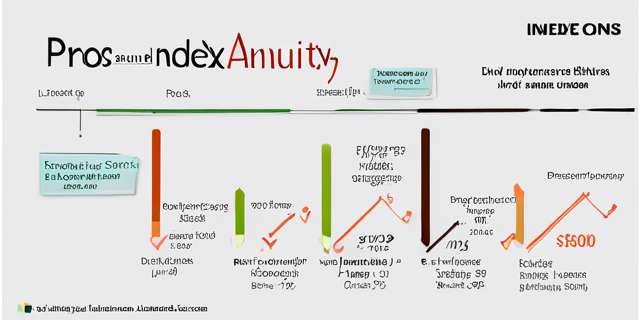Socially Responsible Investing Guide

Socially responsible investing (SRI) has grown increasingly popular over the last decade. Investors today are looking to align their investments with their values and contribute to positive change through their capital allocation. This comprehensive guide will explore the key aspects of SRI investing including its growth, strategies, performance, and implementation.
What is Socially Responsible Investing?
Socially responsible investing, also known as sustainable investing or ethical investing, is an investment approach that incorporates environmental, social, and governance (ESG) factors into the selection and management of investments. The strategies under the SRI umbrella aim to align investments with an investor’s ethical principles while still targeting competitive returns.
The most common SRI approaches include:
- ESG Integration: Systematically factoring in ESG criteria into analysis of companies and securities to improve risk/return profiles.
- Negative Screening: Excluding certain sectors, companies, or practices based on specific ESG criteria or business activities.
- Positive Screening: Investing in companies that actively pursue positive corporate social responsibility and sustainability initiatives.
- Impact Investing: Targeting companies and funds designed to achieve measurable beneficial social or environmental impact alongside financial return.
- Shareholder Advocacy: Using influence as shareholders to engage companies and promote positive ESG actions through proxy voting, shareholder resolutions, and direct corporate engagement.
These SRI strategies allow investors to construct portfolios that reflect their values and support companies exhibiting positive ESG practices.
Growth of SRI Investing
Socially responsible investing has experienced rapid growth over the past decade, rising from a niche strategy to a significant segment of the broader investment universe. Some key stats on the growth of SRI:
- Assets in US-domiciled SRI funds grew from $569 billion in 2007 to over $3.1 trillion by 2021, a 5X increase. SRI now accounts for over 1/3 of all professionally managed assets in the US.
- 81% of individual investors are interested in ESG investing, according to Morgan Stanley. Millennials are leading the momentum into ESG strategies.
- 1,345 money managers across 50 countries signed on to the UN-supported Principles for Responsible Investment as of 2021, representing over $145 trillion in AUM.
- 22% of all global fund flows went into ESG funds in 2021. Inflows into ESG funds have steadily risen in recent years.
- 90% of S&P 500 companies published corporate sustainability reports in 2019 compared to just 20% in 2011. Firms feel increasing pressure from stakeholders to provide ESG transparency and progress.
This explosive rise of SRI from niche trend to mainstream investing reflects growing consumer and investor demand for companies to be responsible actors and integrate ESG factors into their operations.
Motivations for SRI Investing

There are several driving factors behind the mass adoption of socially responsible investing:
Values Alignment
The top motivation is that investors increasingly want their investments to align with their environmental and social values. They want their capital to reflect their priorities.
Risk Management
Numerous studies suggest companies with poor ESG practices carry higher risks. Integrating ESG analysis into investment processes serves to mitigate risks.
Demand for Action
Many investors want to use their capital to motivate corporations and markets to address social and environmental concerns. They demand accountability.
Younger Generations
Younger investors especially care deeply about sustainability and social issues. This enormous generational wealth transfer is propelling ESG investing.
Investment Performance
The empirical track record of sustainable funds exceeding conventional fund performance counters outdated misconceptions.
Increased ESG Awareness
High profile ESG issues like climate change and diversity have amplified public focus on the societal role of corporations.
Rise of Big Data
Proliferation of ESG ratings, data, and analytics from Bloomberg, MSCI, Sustainalytics, ISS, and others allows systematic ESG integration.
This confluence of motivational factors has reached a tipping point where integrating sustainability is now essential for institutions and asset managers.
Common Approaches to SRI
Socially responsible investors employ a variety of strategies and approaches:
ESG Integration
Integrating analysis of material ESG risks and opportunities into the fundamentals-based research process for making investments. Requires systematic methodology for factoring in ESG criteria.
Negative Screens
Avoiding investments in certain categories, sectors, or companies that do not align with an investor’s values or code of ethics. Most common is to screen out weapons, tobacco, gambling, alcohol, fossil fuels.
Positive Screens
Tilting investments towards companies that actively pursue and achieve positive ESG outcomes through shareholder engagement, internal initiatives, and transparency.
Thematic Investing
Targeting specific themes like clean energy, sustainable agriculture, or diversity & inclusion to achieve intentional real-world impacts alongside financial return.
Shareholder Advocacy
Leveraging rights as shareholders to submit proposals and use proxy voting power to influence companies to adopt sustainable best practices and policies.
Impact Investing
Investing in private markets and funds designed to create measurable positive social and environmental impact while still targeting market rate returns.
Best-In-Class
Selecting the top ESG performers within each sector according to ESG metrics and scores while avoiding making values-based exclusions of entire sectors.
Negative Screens
Negative screening seeks to align investments with ethical values by excluding certain categories, sectors, and stocks that are objectionable to the investor. Some common negative screens include:
Tobacco
Avoiding investment in tobacco companies engaged in production, distribution and marketing of cigarettes and tobacco products. This screen often enjoys wide support on moral grounds.
Weapons
Excluding investment in companies manufacturing or distributing weapons, guns, ammunition, military equipment. Many investors make exceptions for defensive equipment.
Gambling
Avoiding casinos, racetracks, lottery services, online gambling sites and related gambling activities that some investors view as immoral or exploitative.
Alcohol
Alcohol exclusion screens cut out manufacturers and producers of alcoholic beverages across beer, wine and spirits. Some investors focus solely on hard liquor.
Adult Entertainment
This exclusion screen filters out the pornography industry and adult entertainment based on objections from religious or feminist investors over exploitation.
Fossil Fuels
Fossil fuel screens exclude oil, natural gas, and thermal coal companies. This screen has grown very popular with environmentalist investors concerned about climate change.
Predatory Lending
This screen filters out firms engaged in payday lending, subprime mortgages, high-interest installment loans, and other exploitative lending practices.
Private Prisons
Avoiding investment in private, for-profit prison operators draws objections around the prison industrial complex and racial justice issues.
Positive ESG Screens
Rather than excluding certain sectors as negative screens do, positive screening actively tilts investments toward companies that score well on ESG metrics and demonstrate commitment to sustainability through proactive policies and practices.
Strong Sustainability Ratings
Selecting companies with high overall scores on ESG ratings and rankings systems like those from MSCI, Sustainalytics, ISS and Bloomberg esg. Firms rated highly exhibit positive ESG behavior.
Board Diversity
Targeting companies that promote gender, racial, and cultural diversity on their board of directors. Diverse leadership is linked to stronger financial performance and governance.
Employee Satisfaction
Favoring companies ranked highly for workplace culture, health benefits, training programs, pay equity, union relationships and overall employee satisfaction. Happy employees translate to better business performance.
Environmental Leaders
Companies with proactive initiatives around renewable energy, GHG emissions reductions, water and resource conservation, and sustainable supply chain management.
Human Rights Commitment
Excluding companies with labor rights controversies in their operations and supply chains. Emphasizing firms with strong human rights policies and practices.
Corporate Philanthropy
Seeking companies with robust charitable giving and corporate citizenship programs. Firms exhibiting generosity often have good community and stakeholder relations.
ESG Ratings and Data
The proliferation of ESG ratings, rankings, scores, and data has enabled the growth of sustainability-focused investing. Some leading providers:
MSCI ESG Ratings
MSCI provides highly influential ESG ratings on over 6,000 companies globally. Their 1-10 scoring model incorporates 600+ factors related to ESG risks and opportunities.
Sustainalytics ESG Risk Ratings
Sustainalytics assesses over 10,000 companies worldwide through a quantitative model that identifies and scores 20 ESG issues and 100+ industry specific indicators.
ISS ESG QualityScore
ISS ESG analytics cover 8,000+ issuers and leverages 400+ key performance indicators to evaluate relative ESG risk versus peers. Offers global coverage across sectors.
Bloomberg Terminal ESG
Bloomberg’s data includes ESG scores for 13,000 companies plus fixed income ESG ratings for over 45,000 municipal and corporate issues. Integrated into the terminal.
Refinitiv ESG Scores
Leverages 400+ ESG metrics and weighs key performance indicators differently based on each company’s subindustry to produce an overall ESG score from 0-100.
CDP Disclosure & Scoring
CDP collects data on GHG emissions, water use, deforestation risk, and climate strategies through their environmental disclosure platform. They issue A-F performance scores.
The explosion in ESG ratings allows investors to readily compare companies across material sustainability KPIs and systematically integrate ESG factors into portfolio construction.
Shareholder Advocacy & Engagement
Active shareholders can positively influence corporate policies and practices related to ESG issues through shareholder advocacy strategies like:
Shareholder Resolutions
Filing proposals for the annual shareholder proxy ballot to push management on ESG actions like climate risk disclosure, human rights assessments, or board diversity initiatives.
Proxy Voting
Formally codifying support of ESG-related proxy items into voting policy and voting 100% of proxies to drive outcomes aligned with ESG priorities.
Direct Engagement
Entering dialogues, negotiations, and partnerships directly with company management in a constructive manner and providing guidance on how they can improve ESG performance.
Public Policy Participation
Weighing in on financial regulatory reforms, state and national legislation supporting ESG transparency, and other policy issues to enable stakeholder-friendly outcomes.
Collaborative Initiatives
Banding together with other like-minded shareholders through industry groups like Ceres, ICGN, and PRI to increase leverage and jointly advocate for positive changes.
Proactive shareholder advocacy compels companies to raise their ESG ambition and accountability. Rather than simply divesting from ESG laggards, active shareholders have the opportunity to catalyze real progress.
Measuring SRI Impact
A complicating factor for SRI investors is determining the real-world impact their capital allocation is having. This nascent field relies on metrics like:
- Carbon Footprint – Measure the total carbon emissions of a portfolio normalized by the size of the investment (expressed in tons of CO2e per $M invested).
- Green Revenues – Percent of portfolio company revenues derived from environmentally beneficial products and services like renewables, green buildings, conservation.
- Board Gender Diversity – Percent of board seats held by women as a proxy for gender inclusion and advancement.
- ESG Rating Improvements – Assess if portfolio companies are improving their overall ESG risk ratings through enhanced sustainability initiatives.
- UN SDG Contribution – Gauge the percent of investments aligned with the UN Sustainable Development Goals such as Zero Hunger, Good Health & Wellbeing.
- Impact Investments – Within impact investing, IRIS catalogues nearly 600 recognized metrics to benchmark social and environmental performance.
While quantifying impact remains challenging, investors at minimum should track core ESG portfolio characteristics over time to ensure alignment with their sustainability objectives.
The Performance Debate
A lingering perception persists that investors must sacrifice returns to allocate towards more responsible investments. However, a growing body of empirical evidence refutes the notion that practicing sustainable investing consigns investors to below-average returns.
For example:
- Morningstar found 56 out of 57 of their ESG indexes outperformed their non-ESG equivalent indexes over 10 years.
- Morgan Stanley Institute reported that strong ESG profiles correlate to better return on equity performance.
- MSCI found companies with high ESG ratings experienced lower volatility and risks than their peers.
- BNP Paribas discovered sustainable funds delivered higher returns during market downturns.
- Nuveen demonstrated responsible investing delivered equivalent or slightly better returns over the long-term compared to conventional funds.
- High performing funds like Parnassus, Green Century, and Pax World have combined robust returns with ethical sensibilities.
While more research needs done, the empirical data increasingly debunks outdated notions that investors must accept lower returns to achieve their sustainability objectives. If anything, avoiding irresponsible companies may boost returns.
Implementation Approaches
Investors have several options for practically implementing an SRI approach aligned with their values:
SRI Mutual & ETFs
Choose from the multitude of mutual funds and ETFs in the sustainable investing category offered by fund companies like Calvert, Parnassus, Pax World, Green Century, GuideStone, and many more.
Self-Directed SRI Portfolio
Build your own customized portfolio of individual stocks filtered using ESG scores and ratings or by applying your own negative screens and tilts.
Voting Proxies & Advocacy
Push companies towards improved ESG practices by sponsoring shareholder resolutions, thoughtfully voting your proxies to support key ESG proposals, and direct corporate engagement.
Hire an SRI Advisor
Engage a dedicated sustainable investment advisor or RIATM professional to construct and manage a custom portfolio optimized around your specific ESG criteria and impact goals.
Community Investing
Allocate a portion of your portfolio to community development institutions, impact bonds, microlenders, and crowdfunding sites that finance projects benefiting underserved groups.
The range of options empowers both individual investors and institutions to build investment portfolios aligned with their unique social and environmental values.
Conclusion
The impressive growth of sustainable investing reflects increasing investor demand for aligning capital allocation to generate positive impact alongside financial returns. By systematically incorporating ESG analysis into the investment process, negative screening out objectionable activities, and positively tilting towards firms exhibiting ESG leadership, investors can construct SRI portfolios reflecting their values without sacrificing returns. Shareholder advocacy and corporate engagement present additional avenues to motivate enhanced business sustainability. A spectrum of approaches exists for investors to customize implementation of their sustainable investing policy in accordance with their priorities and sensibilities. While challenges remain around standardizing and quantifying impact, the field will continue maturing. Overall the compelling empirical and anecdotal evidence affirms that pursuing one’s social passions in the financial markets does not necessitate reduced investment performance. Socially responsible investing allows investors to do well and do good simultaneously.
Frequently Asked Questions
What are the most common ESG exclusion criteria used in negative screening?
The most prevalent negative screens exclude tobacco, weapons, gambling, adult entertainment, private prisons, and fossil fuel producers. Alcohol and predatory lending are also common.
Does socially responsible investing require reduced investment returns?
No. Numerous empirical studies show no systematic performance penalty associated with socially responsible investing. ESG integration may even boost returns by reducing risks.
How do ESG ratings and scores work to rank company sustainability?
ESG research providers analyze thousands of data points to score companies on how well they manage the most material environmental, social and governance risks and opportunities relative to peers.
What options exist for implementing an SRI approach for individuals?
Individuals can invest in SRI mutual funds and ETFs, build their own screened portfolio, vote proxies to advocate for change, invest in community development initiatives, or hire an SRI advisor to construct a custom SRI portfolio.
What steps can active shareholders take to encourage positive change in companies?
Shareholder advocacy approaches like sponsoring ESG resolutions, thoughtfully voting proxies, nominating diverse directors, direct engagement with management, and participating in collaborative industry initiatives.
How can impact and social return be quantified for SRI portfolios?
Metrics are still evolving but include company ESG rating improvements, carbon footprint, portfolio UN SDG alignment, green revenues, board diversity increases, and impact measurement frameworks like IRIS.









